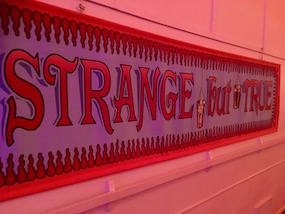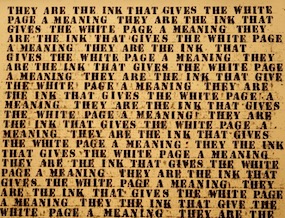Anthony Burgess wrote A Clockwork Orange in three weeks to earn aquick buck and Fyodor Dostoyevsky wrote The Gambler in a few days when he was broke and desperate due to his compulsive gambling habits. But these books are the freaks, the anomalies driven by some kind of demon writing force. At the other end of the spectrum, J.R.R. Tolkien took twelve years to complete Lord of the Rings.

It was Ernest Hemingway who said the first draft of anything is shit. Some famous writers have completely trashed their first drafts and rewritten them, the published work unrecognizable from the original draft – think William Golding’s Lord of the Flies and Harper Lee’s To Kill a Mockingbird.
I have listened to many writers being asked how long it takes to write a book in interviews. Most published authors seem to answer somewhere between one and ten years and they may produce as many as fifteen drafts (though the most I’ve heard quoted was 30).
There is endless advice available on how many drafts it takes to write a book – the three-draft method, the five-draft plan, the seven-draft process. But the more you listen and read, the more it becomes clear that there are as many ways to write a novel as there are writers.

What most writers seem to agree on is that the first draft is the vomit draft – your writing is focused only on extracting your imagination to get a version of your story on the page. It’s great fun to write and terrible to read. After that all bets are off. One thing is certain, you have to learn to love editing, and be prepared to kill your darlings, because you will probably go through many more erasers than you will pencils.
How people edit depends on how they write their first draft. For example I have noticed that I find dialogue relatively easy, but tend to leave out the protagonists internal emotional life in a first draft which I have to go back and write it in later. I also have some pet words I like to repeat over and over which I go back to and delete or change.
I have started work on a checklist for my editing to try and make it more efficient and have included it below. It is not exhaustive and I will continue to work on my ‘cheat sheet’ as I learn more about the editing process. I also think about editing at the microlevel of the scene, the mid-level of the chapter and the macrolevel of the overall story. Most of the following list is drawn from the works on my links page Books on writing, particularly the text Self-editing for fiction writers by Renni Browne and Dave King.

- Openings: are they clear, engaging and connected to emotion? Do they raise a questions or hook that makes you want to keep reading? Was there a hint of conflict?
- Character: are the characters unique and interesting? Do you care about them (or hate them), do they have believable weaknesses, motivations and challenges?
- Characterization and exposition: let readers get to know your characters gradually by showing who they are. Look for where you have too much exposition – describing characters or their history – how much do readers need to know to understand the story and when do they need to know it? Take out what isn’t critical.
- Emotion and narrative voice: Read each main characters dialogue aloud – do you detect a unique voice for each, does what they say fit them? Do you feel like you get inside the main characters head? Are you emotionally connected to them?
- Drama and story: Is there tension in every scene? Is the story well-paced and does it have forward momentum? Are the stakes high enough? What could be cut/shortened? Are there gaps that need to be expanded?
- Themes, subtext and moral dilemmas: what themes and moral dilemmas emerge? Can you see subtext?
- World: is the world created unique and interesting? Have you told your reader enough, or too much about it?
- Prose: do the story and the characters feel believable? Is it easy to read? Is anything confusing? Is there a strong and consistent point of view? Does it make you want to read on?
- Dialogue: is there too much, or too little? Does it reveal character? Is there subtext? Check for emotions mentioned outside of dialogue – they are probably explanations – cut them and see how the dialogue reads – if it’s worse re-write it; are there any verbs other than said? Minimize benign verbs like replied or answered as they are obtrusive to the reader – where possible get rid of speaker attributions all together if it’s clear without them; Have you referred to a character more than one way in a scene ? – it’s confusing be consistent. Do you have the right balance of dialogue and beats (the action interspersed through a scene) to keep you reader grounded? Are your beats too repetitive? Do they show your characters?
- Dialogue sound: Read out loud. When you are tempted to change a word – do; does your dialogue sound realistic with enough contractions, fragments, run-on sentences? If your dialogue sounds stiff – is it exposition in disguise? How well do your characters understand one another? Do they mislead one another?
- Show and tell: Have you got the right balance between narrative summary and enough real time action? If there’s too much narrative summary can you convert sections into scenes? Do you describe or show your characters feelings? Cut all explanations of feelings (angry, sad, happy) and show them instead.
- Be proportionate: Are the characters you develop most fully the important ones throughout the story? Are the descriptive details you provide those your viewpoint character would notice? Do all the subplots and tangents advance the plot? If there aren’t any, should there be? Have you got on your hobby horse and spent too much time on a pet interest?
- White space: are your paragraphs too long or are there scenes with no longer paragraphs – Have you got the right balance?
- Rude bits: do you use too much swearing? If you have sex scenes, how much do you leave to your readers imagination (you don’t want to win the bad sex award, do you)?
- Words – remove unintentional word repeats (I have tendency to use realized and looked way too much) Word hippo is a great resource for synonyms; search and find ‘ly’ adverb – most of them are probably superfluous particularly if they are based on adjectives describing an emotion; minimize ‘ing’ words and ‘as’ phrases; remove extra words; sentences that don’t make sense; if you have lots of short sentences, would they be better strung together with commas? Minimize exclamation points and italics.
- Check spelling and grammar.
I recommend focusing on each of the editing elements separately.
What would you add to this list?
Main image: Mount Yasur, Vanuatu
